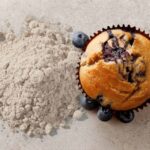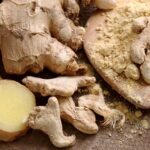Doda burfi, a heat-dried and popular sweetmeat of northern India, is characterized by caramelized and nutty flavour and granular texture. Although the manufacturing of doda burfi is confined to the cottage industry, its mechanized production is needed for a higher production rate and better quality control on account of its increasing popularity. Dhruv Juyal and LPS Rajput discuss the traditional Indian Dairy Products and the method of doda burfi preparation.
Table of Contents
Milk and milk-based products have been a good source of nutrition to human health. (Mohanta et al. 2016). Milk has been described as nature’s nearly “perfect food” in that it provides vital nutrients like proteins, essential fatty acids, vitamins, minerals, and lactose in balanced proportions. Traditional Indian dairy products contain a significant proportion of milk nutrients and, therefore, are highly nutritious. Burfi is the most popular Khoa-based traditional Indian Dairy Product all over India.
Origin and History of Doda Burfi
The generic nomenclature “Burfi” covers a wide range of product variations that include plain, danedar, dudh, chocolate, etc., which have variations in flavor, color, body, and texture. Burfi is prepared by heating a mixture of milk solids (Khoa) and sugar to a homogenous consistency, followed by cooling and cutting into small cubes. These products are delicious and good for health. The addition of cereals like wheat and rice, fruits, fruit pulps, and vegetables to milk results in value addition in terms of nutrition. It is a common practice in the Indian continent to consume milk along with cereals and fruits.
These products are highly nutritious and contain minor constituents that are deficient in milk, which are supplemented by cereal and vice versa. Such a product is also beneficial for infants and growing children because of its flavor and its nutritional value, which provides essential nourishment for the body growth and maintenance in infants (Devraju et al, 2017). Several types of foods or milk products are developed based on cereal foods, such as malt milk food, infant foods, etc., which are very nutritious, healthy, and popular foods (Aneja et al, 2002). In this manner, a sprouted wheat-based milk product called Doda Burfi is being manufactured.
Doda Burfi: A Traditional Indian Sweet
Doda burfi is a traditional Indian Dairy Product of Northern India. The sweet is particularly famous in states like Punjab, Haryana, and Western India and is garnished with various nuts such as almonds, cashews, and pistachios. However, the garnishing entities are purely optional and vary from one manufacturer to another.
The product is characterized by a pleasant caramelized flavor, dark brown color, and a sticky granular body. Conventional doda burfi contains most of its nutrients in pre-digested form owing to the germination process of wheat and serves as an excellent source of dietary fiber, which is usually absent in other dairy products. Recently, various traditional Indian Dairy Products such as rasogolla, milk cake, kalakand, kheer, and some other regional-specific products like the range of burfi, channa murki, payasam, etc., are being explored and gaining popularity in various countries.
Step-by-Step Process: How to Make Doda Burfi
Though some renowned manufacturers are undertaking the recent practice of manufacturing such traditional Indian Dairy Products, the product still carries the limitation of short shelf life and early spoilage due to microbial contamination, especially yeast and mould growth in sweetmeats due to high sugar content (Chawla et al, 2015). However, being prepared at a small scale, the hygienic conditions are usually not maintained, and thus the inferior quality product is often marketed (Patil, 2002).
Of the total milk commercially processed, about 50-55% is converted by the traditional sector into a variety of milk products (Banerjee, 1997). Though exact figures for the production and demand of doda burfi are not available, the market for traditional dairy products is valued at around Rs. 50,000 crores annually (Aggarwal, 2007).
It can be prepared by the two methods described below:
1. The traditional method of manufacturing Doda burfi

Traditionally, doda burfi is prepared from buffalo milk. In this method, milk is inoculated with curd culture and left for three to four hours so that it develops acidity up to 0.20 percent. It is then mixed with a mixture of germinated wheat flour and wheat flour (ungerminated) in the ratio of (flour: milk; 1:10) and left undisturbed at room temperature for 1-1.5 hours.
The mixture is then cooked over a slow flame till the whole milk gets coagulated. The temperature is raised thereafter, and when after ¾ of the water has been evaporated, sugar is added (16%) and the whole mixture is cooked quickly at the temperature of 85-90°C with continuous stirring and scrapping. On cooling, the product is garnished with nuts and cardamom (Singh and Kumar, 2006).
2. An improved method of manufacturing Doda burfi
Jha (2003) has standardized the process of manufacturing of doda burfi at a laboratory scale. In this, standardized buffalo milk (12% SNF) is acidified using citric acid (50% solution) and left undisturbed for 15- 30 min, which is then blended with desired proportions of flour and malted wheat flour to milk ratio (1:8), and to allow proper moistening, the slurry is kept at room temperature for 30 min.
Afterward, the slurry is cooked at 60°C with continuous scrapping and stirring so that the products do not get stuck at the bottom of the vessel. When the product approaches a pasty consistency, the temperature is then raised to 80°C with the concurrent addition of sugar. Further heating and scraping lead to the development of a brown colour and a thick consistency product. Heating is continued until free fat oozes out, and finally the mixture is poured into stainless steel moulds so as to give the product the desired shape.
Conclusion
Doda burfi is a heat-desiccated sweetmeat of northern India, having high-fat content along with the additional benefits of dietary fiber provided by the cereal component, which otherwise is a deficient component in dairy products. (Chawla et al, 2014). A feasibility study for the mechanized production of doda burfi with improved efficiency using SSHE has been done by Devraju (2010).
References
- Aggarwal S S (2007) Indian traditional milk products sector. In: Gupta PR, editor. Dairy India yearbook. New Delhi. pp. 405–408.
- Aneja R P, Mathur B N , Chandan R C, and Banerjee A K (2002) Technology of traditional milk products, Dairy India publication, Delhi (India).
- Banerjee A K (1997) Processes for commercial production. In: Gupta PR, editor. Dairy India yearbook. New Delhi; pp. 387–392.
- Chawla R, Patil GR and Singh A K (2014) Sensory characterization of doda burfi (Indian milk cake) using Principal Component Analysis. J Food Sci Technol. 51(3):558–564.
- Chawla R, Singh A K and Patil GR (2015) Shelf life enhancement of functional doda burfi (Indian milk cake) with biopreservatives application. International Journal of Research in Science and Technology 5(2):26-40.
- Devaraju R (2010) Feasibility studies on mechanized production of doda burfi using scraped surface heat exchanger. M.Tech. Thesis, NDRI, Karnal, Haryana.
- Devaraju R, Kalla M A and Praveen A R (2017) Process optimization for mechanized production of doda burfi using texture profile analyser. International Journal of Management and Applied Science 3(5):61-65.
- Jha A (2003) Development and evaluation of malted barley flour supplemented doda burfi. M.Sc. Thesis, Bundelkhand University, Jhansi, U.P.
- Mohanta B, Das H and Shrivastava S L (2016) Rasogolla – an Indian Traditional Dairy Product. Research & Reviews: Journal of Food and Dairy Technology 1-10.
- Patil G R(2002) Present status of traditional dairy products. Indian Dairyman 54:35-46.
- Singh A K and Kumar A (2006) Technologies of selected region-specific traditional milk products. In: 21st Short course on Developments in traditional dairy products, Dec. 10-30, 2006, NDRI, Karnal. Pp.225-234.

















